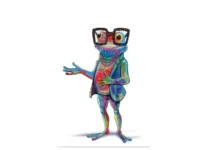
Dear Prime Minister Shri Narendra Modi ji,
Thanks to you, these days, many of us have the ideal of a Swacch Bharat as a twinkle in our eyes. The starry, far away dream of Mahatma Gandhi to see a Clean India will not be difficult to achieve if we all make it a matter of our national pride and an imperative for better public health. To set the ball rolling you invited several prominent persons to join you in the Swacch Bharat campaign and in turn invite more persons to commit themselves to this patriotic cause. From whatever we see in the media and hear on the streets it is evident that the campaign is gathering force and popular support. Litter-free streets, tourist trails and village fields and ponds free from strewn plastic may actually be possible to see in India after all!
However, we all know, a litter-free India cannot be achieved just by sweeping the streets and evoking national pride. We must start the process of cleaning India from the root cause – from the generation and disposal of packaging waste (amongst other such root causes). We must manage the disposal of factory generated packaging waste and we must work with the consumers as well as the pack itself to minimize ‘post consumer waste’ or litter – in other words.
A lot of good work, trials and suggestions have already been made by learned experts about managing ‘post consumer waste’ at a municipality or community level in many parts of India. On the other hand about the packaging itself and its role in generating the litter in the first place – we hear little discussion. Therefore, this is an attempt by an ‘insider’ from the packaging industry to highlight a few suggestions of what could be done by ‘on pack’ actions to control the spectre of packaging litter.
PACE – Packaging Actions for a Cleaner Environment

Keeping in view your fondness for creating memorable acronyms it is suggested that this part of the Swacch Bharat campaign could be called PACE – Packaging Actions for a Cleaner Environment. This acronym will help to draw special attention to the urgent need to re-think our packaging norms and how they must also be made to work for the Clean India objective. It must be added at this point that packaging plays a key role in protecting products and delivering them safely and conveniently to the hands of consumers in the remotest parts of the country. For example, a major consumer product company like Unilever purchases and distributes 2.4 million tonnes of packaging material every year. All this material has to end up as waste in landfills or as street litter. But, as quoted on the HUL website, “More attention must be given to extracting economic worth from discarded packaging. Waste is increasingly becoming the new resource . . . it has value!” On the same lines, HUL goes on to say, “We have decided to put a new focus on designing for a circular economy. This means designing products so that resources are used in a cyclical way. Materials can be regenerated and constantly flow round a ‘closed loop’ system, rather than being used once and then discarded. We will also put more emphasis on identifying breakthrough materials, designing for recyclability and stimulating the development of more advanced recycling infrastructure.”
Given this ultimate objective of achieving a circular economy, which is being attempted to varying degrees of success around the world, I have attempted to formulate just a few broad suggestions which if implemented at a policy level will surely help to tackle the packaging litter problem.
Statutory recycling
In India we have a natural inclination towards recycling. We make sure to extract the last bit of ‘service’ from anything we use. We must use this national characteristic to ensure more and more packaging is made recyclable. Traditionally available packaging materials such as tin, glass or paperboard are easily recyclable. Plastic is basically recyclable too but becomes non-recyclable when used in combination with paper, foil or other non-related polymers. Very often in flexible packs different polymer layers are laminated together just to improve print appearance at the cost of recyclability. For daily use consumer products use of such non-recyclable packs needs to be statutorily restricted and more use of mono-resin, recyclable film packs needs to be encouraged.
Once recyclable packs become possible even for small size sachets, portion packs or confectionery packs sold at every street corner the informal ‘business network’ of rag pickers in India will surely ensure that the tiniest littered pack is collected and taken for recycling.
Encouraging re-use
Most of us are already familiar with the ‘refill pack’ – the cheaper version of a product sold in packaging that needs to be transferred to the original, more expensive container. Decades of frugality and belt tightening have made this also a natural consumer characteristic in India. Innovative re-use of packaging is visible all around us – be it the bottle with its neck cut off to use as a ‘lota’ or the flexible laminate used for covering a text book. This re-use characteristic could be encouraged to reduce overall consumption and indiscriminate discarding of packaging material. The virtues of re-use could be played up in public media just as Gandhi ji successfully made an example of promoting re-use of old envelopes as note-paper.
Reduced packaging – More loose sale
HUL has made a public commitment to reduce by one third, the absolute amount of packaging material it uses by the year 2020. Most consumer product companies are working hard to reduce packaging material usage by weight or material innovation. The example of loose milk sales by Mother Dairy without the use of consumer packaging is already well known. Returnable packaging is also a tried and tested option, which was abandoned by marketing companies just to promote consumer convenience. Ways and means to encourage consumers to opt for ‘loose purchase’ (from ‘safe’ outlets – like Mother Dairy) or pay more for convenience and throwaway packaging need to be devised.
Proactive civic duty marking
Pictorial marking on packs is not being used to its full potential. In a diverse population like India with many languages pictorial marking could be statutory. Just as a Green Dot is marked on a pack to denote a ‘vegetarian product’ other pictorial marks could be stipulated to denote recycling value or the segregation category of the pack. In addition just as statutory health warnings get stipulated to be placed on tobacco packs, for other packs too socially beneficial civic duty messages could be stipulated. For starters the Swacch Bharat message could be mandatory for placing on all packaging that goes out. It may be noted here that the ‘reach’ of packaging media is often far deeper than print media.
Enforcing extended producer responsibility
By enforcing returnable packs, recycling and re-use the consumer will begin to share responsibility for a cleaner environment. In the same way product producers too must participate by their obligation to fund the development of waste packaging recovery and recycling business models. Installation of ‘reverse vending’ machines is one such way in which producers fulfill their responsibility. Packaging Compliance Schemes – such as Repak or Green Dot – running in Europe with subscriptions from participating producer companies are already an example of how successfully this can be managed. For India a customized scheme involving the producer, the consumer as well as the ever-entrepreneurial rag picker needs to be developed.
WRAP – The Waste and Resource Action Programme
Obviously controlling the production of packaging waste and managing post-consumer waste is not India’s problem alone. The UK Government for example has created a non-profit department called WRAP – The Waste & Resource Action Programme (Yes, they also appear to like creating acronyms). It was created to develop the Government’s waste management strategies and its mission is to help develop markets for materials that would otherwise become waste.
In the end I would also like to use this opportunity to invite the attention of the leaders of the packaging industry in India, as well as my colleagues and friends who can contribute their ideas and resources to lend a shoulder to the cause of Swacch Bharat. Together we can gather PACE – Packaging Actions for a Cleaner Environment.
We all need to check the litter in our box and – with your stamp of authority – send it on its way.
Looking forward to a litter better India! – Clean India.
Yours truly, Deepak Manchanda
This article was published twice earlier and it has been republished now to underscore the critical nature of the matter that is deliberated.










